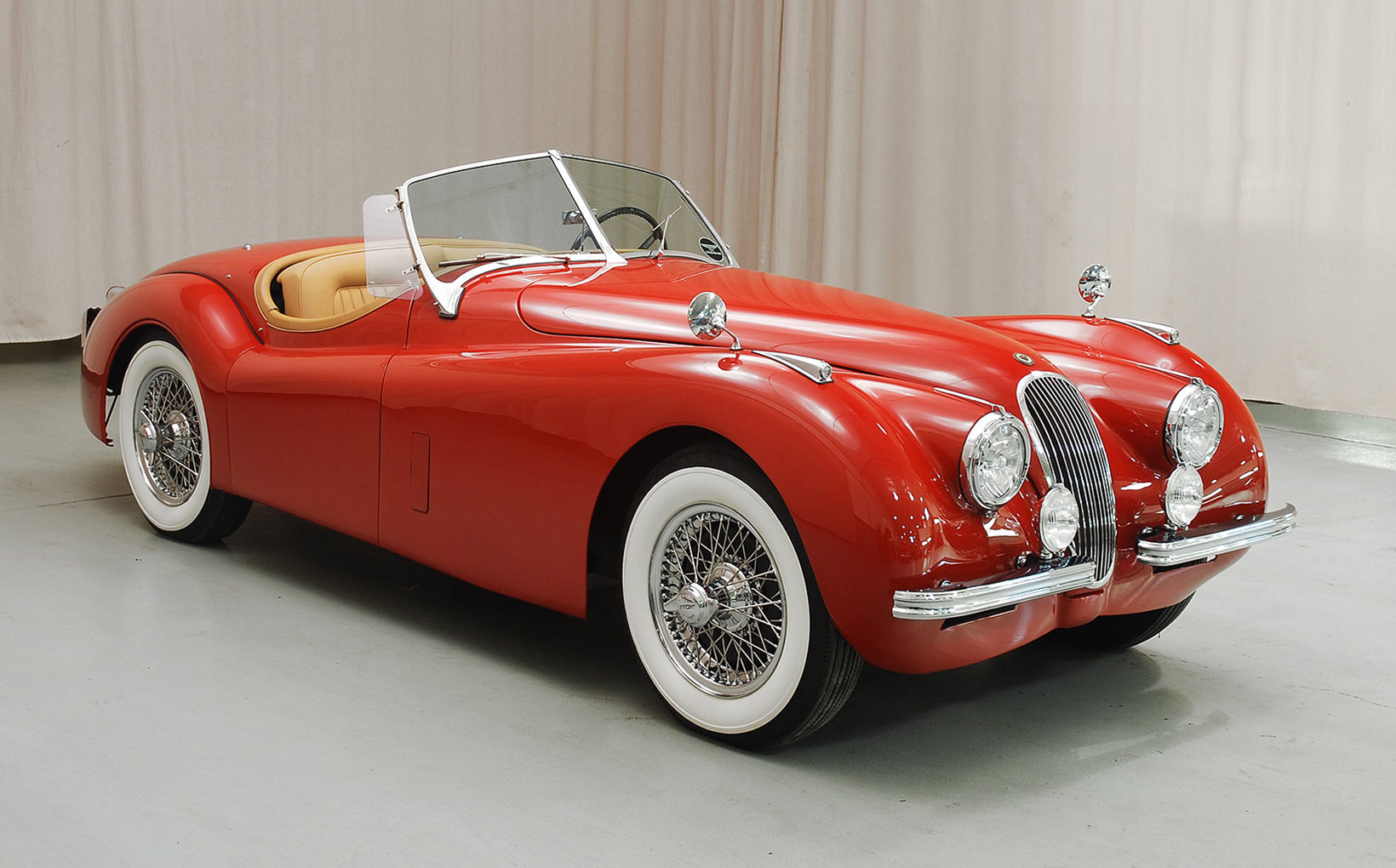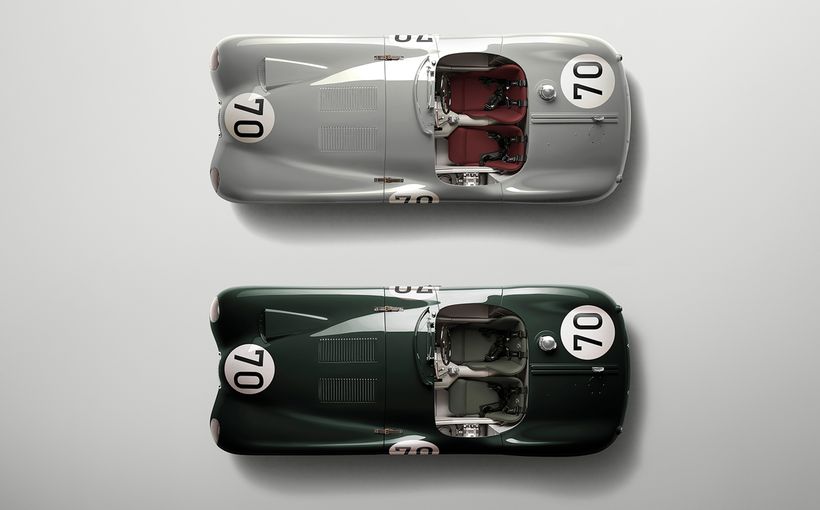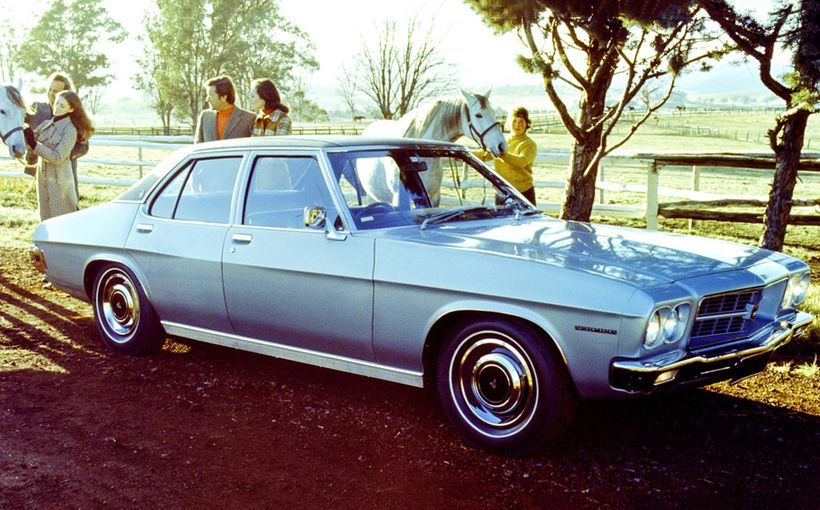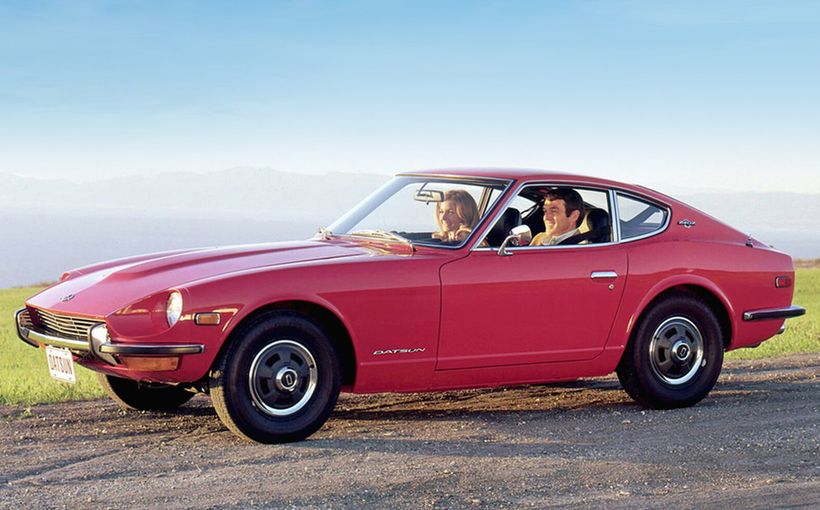Jaguar XK: the definitive 1950s British sports car

The XK120 not only redefined the Jaguar brand, but it was the most inspirational new car of the 1940s. On 27 October 1948, the first British postwar motor show opened its doors to the public in Earls Court. By the time the last spectator was bound for home on the Clapham (or whatever) omnibus, a record 562,954 people had attended, dramatically eclipsing the previous best tally of 315,000. A snapshot of Great Britain in 1948: no longer really so Great despite the Allied victory in World War Two; the best of times (optimism for the era of peace and new opportunities) and the worst of times (fresh memories of loss and privation, continuing austerity with wartime measures such as petrol rationing still in place).
In the US an unprecedented era of prosperity, epitomised by bold new cars with extravagant styling and high-compression V8 engines was already evident by 1948.
On 29 November 1948, Australia got the Holden and the rapid move to mass motorisation followed.
The month before the 1948 show, Morris had announced its interpretation of a modern people’s car, the Minor. That in itself was sensational!
But can you imagine what those guests at Earls Court thought when they set eyes on the Art-Deco curvaceous two-seater Jaguar XK120 (where XK denoted a radical new engine and 120 was the fairytale top speed)? Picture it there, in a context of the other new cars, such as the Austin A70 Hampshire, Wolseley 6/80, Hillman Minx Mark IV, Humber Hawk Mark III and even the Morris Minor, all of them essentially dull. Star of the show seems like an understatement.
Britain was yet to enjoy the rate of car ownership experienced in the US by the end of the Roaring Twenties and the Jaguar XK120 was so far beyond general aspiration as to seem fantastical. People had to be convinced that it wasn’t a racing car; imagine a well-dressed gentleman saying ‘Did I hear you say 120 miles per hour? My brand new 1947 Armstrong Siddeley can barely manage 70 and it cost more money than this Jaguar!’ The XK120 was unbelievably priced at just £998 before tax (aligned more with an MG TC than, say, a Lagonda saloon). Armstrong Siddeley along with Jowett and one or two others had introduced their new models two to three years before Earls Court. But simply no-one outside Jaguar’s elite circle was prepared for the XK120.
I use the definite article deliberately: the white car on display was not AN XK120, it was THE XK120. No-one – perhaps least of all its progenitor William Lyons – foresaw the demand this star of the show would provoke.
The XK120 had not been designed to go racing but its early successes in the sport led to a concerted factory effort, which led to the company’s phenomenal five victories in the 24 Hours of Le Mans – 1951, 1953, 1955, 1956 and 1957. And without the XK120, Jaguar’s most celebrated car ever, the E-Type, would never have been created.

Bill Lyons who (with William Walmsley) founded the Swallow Sidecars company in 1922, built sporty two-seater bodies on the Austin 7 chassis and previewed his first ‘Jaguar’ sports sedan at a lunch at the Mayfair Hotel in October 1935 ahead of the London Motor Show.
The assembled media at this event were asked to guess the price of this rakish close-coupled model with its Harry Westlake-modified Standard 2.5-litre six-cylinder engine making 102 brake horsepower. Their guesses averaged £632 but the actual price was £395. Here lies the clue to Lyons’ priorities from early in his career. He wanted to create beautiful, fast cars (principally saloons) that bore direct comparison with far more expensive rivals up to and including Bentleys.

Even in the postwar years, and despite the success of the 1936-40 SS Jaguar 100 (commonly known as the SS100), for Lyons sports cars were essentially a sideshow, perhaps a way of attracting more custom for the saloons (‘sedan’ being an American coinage). Indeed, when SS Jaguar had its name changed to Jaguar Cars in 1945 there was no plan for a sports car. The XK120, thus, may be seen as one of automotive history’s most compelling instances of happenstance.

Alongside the XK120 were the Mark V saloons, also making their debut. The new model was essentially a rebodied ‘Mark IV’ with a more rigid chassis frame, independent front suspension by torsion bars and Girling hydraulic brakes. It was to be the last Jaguar produced along pre-war lines, i.e. with the body-in-white assembled in house from a jigsaw of panels from assorted suppliers. The planned all-new postwar car, ultimately named Mark VII (Bentley had the Mark VI!) was to have its body pressed and welded entire by Pressed Steel and delivered to Jaguar for final painting and assembly. But the problem was that organising such a major change blew out the schedule. Lyons had hoped his new car would be ready for Earls Court, but by about 1946 (and even though the magniloquent new dual overhead camshaft XK engine was production-ready), it was evident that the car for which it was designed was much more than two years into the future. The Mark V was an interim model until the radical new saloon could be brought to market.
The very fact that the XK engine had been planned for Jaguar’s first all-new postwar saloon shows how serious Lyons was about making inroads into the traditional luxury car segment, not only with a much lower priced machine but also one with superior performance. Before the XK120, dual overhead camshaft engines had never been the stuff of production cars, where even as late as 1948 long-stroke side-valve engines of anaemic output were still typical.
During the war, companies were only supposed to undertake project sanctioned by the government, so planning of the XK engine was conducted in secret and began in 1943. Initially, Lyon had hoped that the Standard engine block – for which Jaguar had developed overhead valves – could be retained; after all, 3.5-litre versions of the SS Jaguar engine could be coaxed to deliver a claimed 160 horsepower, which was the stated target for the new unit. Finally, a new block was developed which had much in common with the old one, itself deemed very robust. The 3.4-litre engine was indeed said to deliver 160bhp but there was enormous scope left for development.

Thus it was that Jaguar Cars created one of the world’s greatest production engines (and General Motors’ magnificent high-compression V8 which made its debut in the 1948 Cadillac range ranks alongside it) and a new chassis, but no radically new car in which to showcase this technology. Lyons came up with the idea of building a run of perhaps 200 sports cars. These could be developed rapidly and would use an abbreviated version of the Mark V’s chassis clothed with an aluminium body mounted on an ash frame, beneath the bonnet of which, nestled like a jewel in its box, would reside the new engine, beautifully finished with polished camshaft covers. One car was readied, barely in time for the show opening.
Indeed, for some months Jaguar had just two more examples. This was despite the frantic clamour for the new sports car. For many Americans, the XK displaced the MG TC as the quintessential and eminently covetable British sports cars. But how was Jaguar’s tiny and overworked publicity machine to convince all these customers both at home abroad, including Clark Gable and Humphrey Bogart, that their cars were approaching the production line? Cleverly, they kept repainting the three prototypes and even switching them from right-hand-drive to left-hand-drive and (perhaps) back again.
This was the Export or Die era for British industry. The XK120 offers perhaps the most graphic illustration of how this worked in practice. Lyons was only able to obtain the raw materials he needed to manufacture cars by guaranteeing to sell most of his vehicles overseas because the country direly needed export pounds for its ravaged economy.

Probably on the Earls Court opening day, Bill Lyons changed his plan to produce the XK120 body in aluminium with a timber frame: the immediate huge demand saw to that; mass production necessitated making it in steel. Just 58 XK Roadsters (officially ‘Open Two-Seater’) had alloy bodies and all were made between August 1949 and April 1950. Of these, a mere six remained in Britain, and all were retained by the manufacturer for public relations and/or racing. Of the first 142 right-hand-drive cars, only four were sold in the UK and two of these four were for collection by overseas customers. During that time 70 were exported to Australia. So, prospective British customers just had to dream...
Of the alloy-bodied examples, a remarkable 20 came to Australia with Melbourne-based Jack Bryson, founder of Bryson Industries, the main customer.
If the press and public had exhibited a degree of scepticism about Jaguar’s claim of a top speed of 120 miles per hour – in the 1940s a figure preserved for outright race cars – the experience of 30 May, 1949 near Jabbeke in Belgium soon dispelled it. Members of the press were flown to Belgium, then transported to a quiet section of motorway to watch chain-smoking test Driver Ron ‘Soapy’ Sutton put the car through its paces.
Yes, the second-ever example, colour-changed from bronze to white for the occasion, was specially tuned, but the only special equipment it had was an under-shield and a racing windscreen, both of which were factory options. Sutton reached 132.6 miles per hour over a flying mile and 126 with the standard windscreen and hood and side screens erected. To demonstrate that this was no race-special, he then idled past the presumably astonished spectators at 10 miles per hour in top gear.

Nevertheless, no 1948 car was perfect. The drum brakes were marginal at best, the driving position cramped for many and vintage-like, and the steering – with the wheel too close to the driver’s chest and strangely angled – was sometimes termed ‘truck-like’. The Moss gearbox was baulky. The ride was more boulevard than traditional sports car, probably with a view to pleasing American consumers. But the cabin got too hot for a climate much warmer than that of Coventry! So, in 1951 Jaguar introduced the Fixed Head Coupe (FHC), another Lyons-inspired masterpiece of design. It’s Art Deco streamline reminded some of Jean Bugatti’s 1930s coupes and was certainly influenced by the one-off SS100 coupe built for the 1938 motor show. The FHC was far more luxurious than the OTS and featured a burr walnut dash.
There remained, though, a demand for a version between these extremes and Lyons’ answer was the Drop Head Coupe (DHC) or what the Americans called a convertible. The interior was plush in the manner of the FHC with wind-up side windows and a fully lined folding roof.
Although the XK120 had not been conceived for racing, it soon found its way to the track. Three were entered in the 1949 one-hour race for Production Sports Cars at Silverstone. The drivers were Leslie Johnson, Peter Walker and Prince Birabongre (‘Bira’) Bhanute of Siam (now Thailand). A blown tyre ended Bira’s chances – he was actually driving the 1948 motor show car! – but Jaguars still finished first and second.
The following year a very young Stirling Moss convinced Jaguar, somewhat against Lyons’ inclination it seems, that he should have the opportunity to compete in the 1950 Tourist Trophy race at Dundrod and he won easily. The company then entered a trio of 120s in the 1950 24 Hours of Le Mans without success. With lessons learnt, a special racing edition known as the XK120C (for Competition) – soon dubbed the ‘C-Type’ – was readied for a serious assault the following year.

It won outright at Le Mans in 1951 and 1953. In the latter year it became the first car to win at an average of more than 100 miles per hour.
The C-Type was not only far more aerodynamically efficient – its body having been designed by Malcolm Sayers, an aerodynamicist from the aircraft industry recruited by Lyons for the purpose – but it was an astonishing 305kg (672lb) lighter at 1016kg (2240lb). The multi-tubular triangulated frame was designed by Bob Knight. The 9:1 compression ratio and optimised cylinder head were said to give 200 brake horsepower (up from 160). Jaguar offered the opinion that the slipperier shape meant just 60 brake horsepower was required to sustain 100 miles per hour rather than the standard 120’s 75.
Peter Whitehead and Peter Walker won outright. But Jaguar fared poorly in 1952 when overheating eliminated all three cars (the aerodynamics had been further improved but the cars had not undergone high-speed testing). Jaguar returned the following year with a secret weapon in the form of Dunlop’s new disc brakes. Triple Webers gave another 20 horsepower. The body was further lightened and there was an aircraft-type rubber fuel bag instead of a metal tank. Tony Rolt and Duncan Hamilton placed first with teammates (Moss/Walker) second (Whitehead/Stewart) fourth.
Racing technology was advancing so rapidly that Jaguar executives – in charge of motorsport was Frank Raymond Wilton ‘Lofty’ England – believed they would need a better car for 1954. The D-Type was that car. It brought Jaguar Le Mans victories in 1955, 1956 and 1957. From the D-Type came the XK-SS road-racer in 1957 and, most famously, the E-Type in March 1961.

In September 1954, the XK120 was superseded by the XK140, which was considerably improved in several areas.
The new model was built on the same wheelbase but was a little longer, thanks to beefier bumpers designed better to withstand assaults from behemoth US cars – the overwhelming majority of all XKs were sold in North America. There was more interior room due to redesigned bulkheads which enabled the footwells to be extended on both sides of the engine, which was moved a few inches forward, as was the still-split windscreen. Rack and pinion steering was fitted and a universal joint in the steering column gave the wheel a less truck-like angle. Telescopic dampers replaced the lever-arm units. Brakes were slightly improved, though still drums all round. A walnut dashboard was fitted to all versions, a big upgrade from the XK120. Two occasional seats were fitted in the rear of the FHC and DHC editions.

The XK140 was powered by the C-Type’s Special Equipment unit which had been optional on later 120s. But because the 140 was significantly heavier, performance was only marginally improved. So, there was poetic licence in the ‘140’. In its road test of an FHC published in the 9 December 1955 edition, The Autocar recorded a true top speed of 129.5 miles per hour with acceleration from zero to 70 miles per hour in 14.2 seconds. An XK120 OTS (14 April 1950) was not tested for top speed – the pre-motorway era British roads not being conducive to such velocities – but recorded a zero to 70 time of 15.5. The Autocar had very high praise for the 140:
The readiness with which 100 m.p.h. can be reached, rather than the absolute maximum, is the car’s outstanding attribute…The number of cars capable of reaching 100 m.p.h. has increased in the past few years. There are very few which can reach this figure in under 30 sec, as the XK140 does with ease. More important, it can be held in overdrive to become a comfortable cruising speed with very low throttle openings and to record a fuel consumption of near enough 22 m.p.g. That these figures can be achieved in a car whose comfort and safety are superlative implies the highest praise for the team responsible for its creation. When these qualities are related to price, there is no other car which can approach it in the high performance sphere, and it is a fine advertisement for the British automobile industry.

But the days of driving your road-registered XK120 to the track and winning were gone and, indeed, only one XK140 ever raced at Le Mans. That was in 1956. Despite being equipped with a D-Type Head, it still had drum brakes and the best it might have placed without misfortune – disqualified for a refuelling infringement after 18 hours while running 11th – was maybe eighth or ninth.

In 1957 came the XK150, whose new styling with wider grille, higher waistline and curved one-piece windscreen reflected that of the 2.4 ‘Mark 1’ saloon. Initially, only FHC and DHC versions were available but the OTS followed in late 1958. The larger body made for an even better grand touring experience but the biggest news was the provision of four-wheel disc brakes. A revised B-type cylinder head gave more power. In 1959 Jaguar introduced the XK150S with so-called straight-port head and triple two-inch SUs.

Nineteen fifty-eight saw the Mark VII saloon superseded by the Mark VIII with a larger 3.8-litre engine and four-wheel disc brakes. The following year brought the sensational 3.8-litre version of the Mark 2 saloon and that engine was soon dropped into the XK150. There was even a 150S 3.8, especially intended for American customers with its claimed 265 brake horsepower in an era when many domestic sedans promised such numbers! The XK150S had a top speed of 136 in overdrive fourth.
With the advent of the E-Type in 1961, Jaguar laid its XK sub-brand to rest but (somewhat cynically because the XK engine was long gone) revived it for a new GT model in 1996. The very fast supercharged XKR in 1998 arrived in 1998. A new aluminium-bodied XK was introduced in 2007 and stayed in production until 2014.

In summary, although sports cars had only been intended by Bill Lyons as what might today be called heroes of the range, the XK Jaguars redefined the Jaguar brand in the 1948-1961 period. Certainly, the saloons sold in much greater numbers but who could say how much of the demand for them was at least partly inspired by sporting successes? For me, an enduring image is the proud round badge on the boot of the 150 proclaiming Jaguar’s 1951, 1953, 1955 and 1957 victories at Le Mans; every Jaguar owner was a winner by association.










